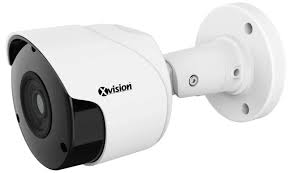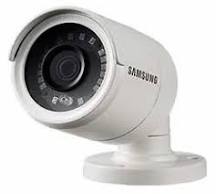In today’s digital age, Closed Circuit Television (CCTV) cameras have become an essential tool for enhancing security in various settings, such as homes, businesses, and public spaces. While many CCTV systems rely on internet connectivity for remote monitoring and data storage, there are also options available for CCTV without internet access.
One common method for setting up CCTV without internet is through a closed-circuit system that operates independently from the web. These systems typically consist of cameras connected directly to a Digital Video Recorder (DVR) or Network Video Recorder (NVR) via cables. The footage captured by the cameras is stored locally on the DVR/NVR’s hard drive, eliminating the need for an internet connection for recording and playback.
Another alternative for implementing CCTV without internet is through the use of wireless cameras that operate on a closed network. These cameras can communicate with a central monitoring station or recorder using a dedicated wireless signal, ensuring that the footage remains secure and inaccessible to unauthorized users without internet access.
One of the key advantages of CCTV systems without internet is enhanced privacy and security. Since the footage is stored locally and does not rely on cloud-based services, there is less risk of data breaches or unauthorized access to sensitive information. Additionally, these systems can provide continuous surveillance even in areas with limited or unreliable internet connectivity.
However, it’s important to note that while CCTV without internet offers certain benefits, there are also limitations to consider. Without remote access capabilities, users may not be able to view live footage or receive alerts on their mobile devices when they are away from the premises. Additionally, local storage solutions may have limited capacity compared to cloud-based storage options.
In conclusion, CCTV systems without internet can be a viable solution for maintaining security and surveillance in various environments where internet connectivity may be limited or unavailable. By understanding the different options available and weighing the pros and cons of each approach, individuals and businesses can choose a CCTV setup that best meets their specific needs and requirements.
5 Essential Tips for Optimizing Offline CCTV Systems
- Ensure the CCTV system has a sufficient internal storage capacity for recording footage.
- Regularly check and maintain the CCTV cameras to ensure they are functioning properly.
- Position the cameras strategically to cover important areas without blind spots.
- Set up a schedule to review recorded footage periodically for security purposes.
- Consider using motion-activated recording to save storage space and focus on relevant events.
Ensure the CCTV system has a sufficient internal storage capacity for recording footage.
When setting up a CCTV system without internet connectivity, it is crucial to ensure that the system has an adequate internal storage capacity for recording footage. Having sufficient storage space on the DVR or NVR is essential for storing recorded videos and ensuring continuous surveillance without the need for cloud-based storage or internet access. By choosing a system with ample internal storage capacity, users can confidently capture and retain valuable footage for later review and analysis, enhancing the overall effectiveness of their security monitoring efforts.
Regularly check and maintain the CCTV cameras to ensure they are functioning properly.
Regularly checking and maintaining CCTV cameras is crucial to ensure they are functioning properly and capturing clear footage. By conducting routine inspections, such as cleaning the lenses, adjusting camera angles, and testing the recording capabilities, you can identify any issues early on and address them promptly. This proactive approach not only helps prevent potential camera malfunctions but also ensures that your surveillance system remains reliable and effective in monitoring the desired area. Remember, a well-maintained CCTV system enhances security and provides peace of mind knowing that your property is being properly monitored.
Position the cameras strategically to cover important areas without blind spots.
To ensure effective surveillance in a CCTV system without internet, it is crucial to strategically position the cameras to cover key areas without any blind spots. By carefully planning the placement of the cameras, ensuring they have a clear line of sight and sufficient coverage overlap, you can maximize the effectiveness of your security monitoring. This strategic positioning helps to capture critical footage and deter potential threats, enhancing the overall security of the premises.
Set up a schedule to review recorded footage periodically for security purposes.
Setting up a schedule to review recorded footage periodically is a crucial tip for maximizing the security benefits of CCTV systems without internet connectivity. By regularly reviewing the captured footage, users can identify any suspicious activities, unauthorized access, or security breaches that may have occurred on the premises. This proactive approach allows for timely intervention and response to potential threats, helping to enhance overall security and safety measures in place. Regular monitoring of recorded footage also serves as a valuable tool for investigations and evidence collection in the event of incidents or emergencies, making it an essential practice for maintaining a vigilant and secure environment.
Consider using motion-activated recording to save storage space and focus on relevant events.
When setting up a CCTV system without internet access, it is advisable to consider using motion-activated recording as a smart strategy to optimize storage space and prioritize capturing relevant events. By activating motion detection settings on your cameras, the system will only start recording when motion is detected within the camera’s field of view, reducing the amount of unnecessary footage that needs to be stored. This not only helps in saving storage space but also ensures that you focus on key events and activities, making it easier to review and analyze footage when needed.



